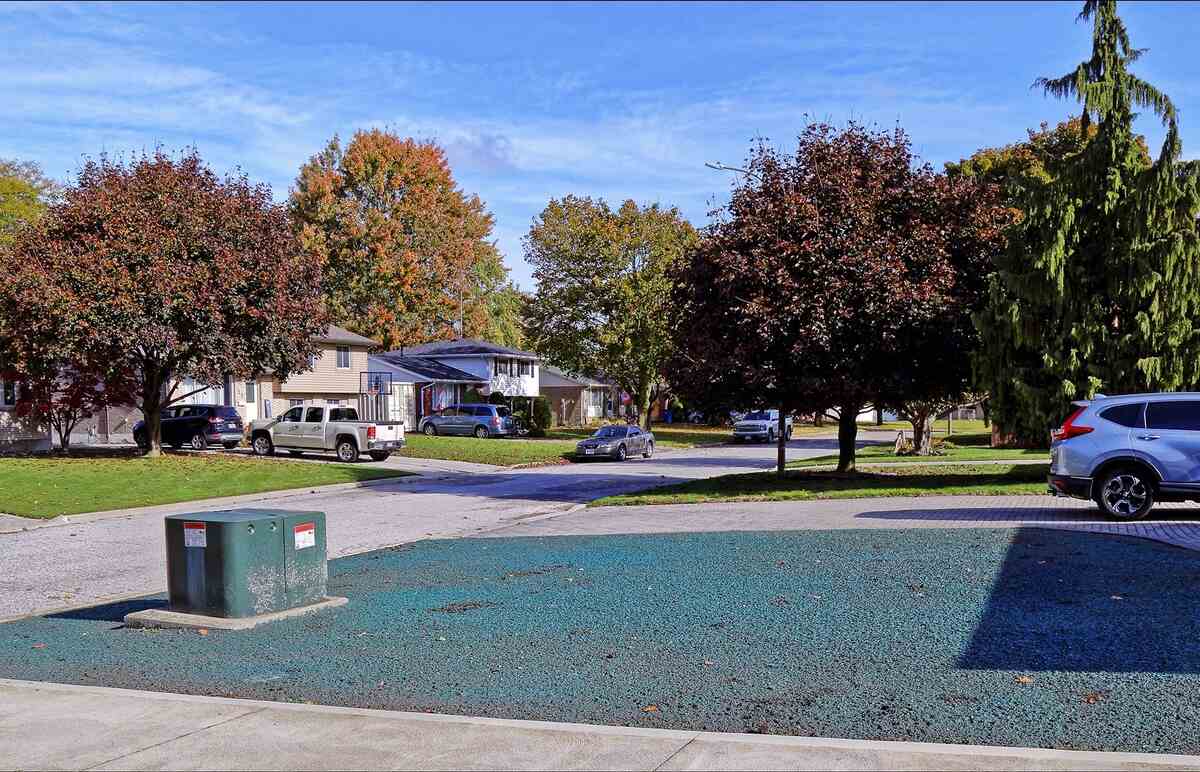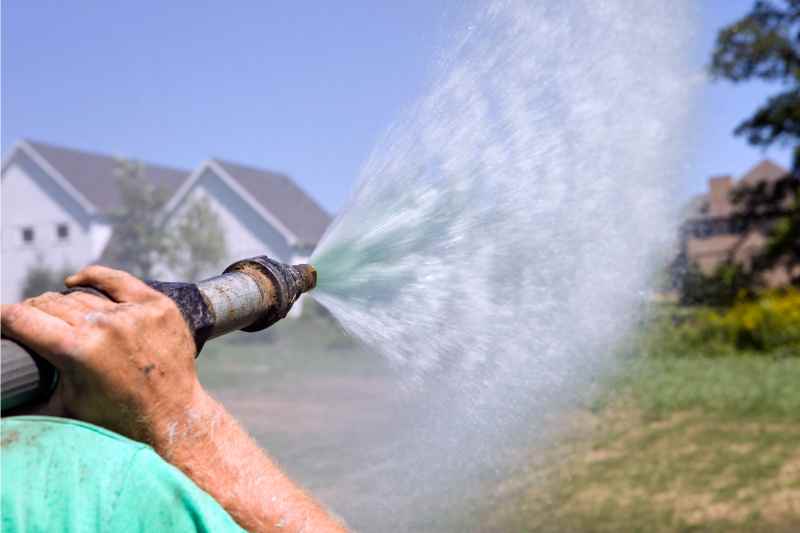How Much Does Hydroseeding Cost?
BY JANINE CAAYAO | AUGUST 7TH, 2023 | BLOG, LAWN CAREHave you ever considered hydroseeding your yard to grow a new lawn? This seeding method is more expensive than traditional seeding, but it’s more cost-effective than laying sod. Most homeowners pay 8 to 20 cents per square foot for hydroseeding services.
Also called hydraulic mulch seeding, hydroseeding works by spraying a slurry mixture of seeds, water, fertilizer, and mulch; sometimes, it also has tackifiers (binding agents), lawn-friendly green dyes, and soil amendments. This mixture is applied to your yard with a machine called a hydroseeder.
The Average Cost of Hydroseeding
| Average Cost Range | $0.08 – $0.20 per sq. ft. |
| Low-End | $90 total |
| High-End | $1,000 total |
Most homeowners across the country pay an average of 8 cents to 20 cents per square foot to get their lawns hydroseeded. Depending on your lawn size, that could come out to as little as $90 or as much as $1,000 – or even more, if we’re talking about a huge property.
These prices include the hydroseeding slurry, hydroseeding equipment, and labor costs. There are other factors that can influence the cost of hydroseeding aside from these, which we’ll cover later in the article.
Hydroseeding Cost by Lawn Size
The biggest cost factor influencing how much you’ll pay for professional hydroseeding is the size of the area to be hydroseeded. Many hydroseeding companies charge for their services by square footage. You can expect a higher price tag if your lawn is quite large.
| Lawn Size | Cost of Hydroseeding |
| 1,000 sq. ft. | $90 – $200 |
| 2,000 sq. ft. | $160 – $400 |
| 3,000 sq. ft. | $240 – $600 |
| 4,000 sq. ft. | $320 – $800 |
| 5,000 sq. ft. | $400 – $1,000 |
If the prices above are alarming you as someone with acres of land, there’s some good news. While it’s still more expensive the more land you need hydroseeded, many hydroseeding companies offer discounts when hydroseeding by the acre.
Other Hydroseeding Cost Factors

Photo Credit: Sue Thompson / Flickr / CC BY-ND 2.0
While lawn size is the biggest cost factor when calculating the price of hydroseeding services, it’s not the only factor. Your yard’s condition, the type of grass, and the type of equipment used can all influence the cost of hydroseeding.
Yard Condition
Is your lawn on a slope? Typically, the steeper the slope of the yard, the higher the hydroseeding cost. Your sloped yard might need more slurry — up to twice as much — and it might need some added ingredients like tackifiers, too.
You might also pay more if your yard is bumpy or uneven, as it’s more difficult to work with. In that case, you might need to have your yard professionally re-graded, which can add quite a bit to your hydroseeding costs.
Lastly, if your yard’s soil quality is poor, you’ll most likely need to pay more to add soil amendments like lime to improve your soil so the seeds will grow successfully into a new lawn.
Type of Grass
Homeowners should always choose a grass type that matches their area’s climate. Typically, this means cool-season grasses like Kentucky bluegrass or tall fescue up North and warm-season grasses like Bermuda and Zoysia down South. Some grass seeds and seed mixes are more expensive than others, increasing the cost of the hydroseeding slurry.
Hydroseeding Equipment
Another factor that can drive up the cost is the type of equipment the lawn care pro will use to hydroseed your lawn. There are many types of hydroseeding equipment, such as hand-held sprayers, hydraulic pumps, and mechanical rotors. Landscapers that use specialized hydroseeding machines typically charge more for their services.
Hydroseeding vs. Sod vs. Seeding Cost Comparison
Hydroseeding is only one method of adding grass to your lawn. How does it compare to laying sod and traditional seeding in terms of cost?
| Hydroseeding | $0.08 to $0.20 per sq. ft. |
| Sod | $0.87 to $1.76 per sq. ft. |
| Seeding | $0.09 to $0.17 per sq. ft. |
Each service has its own pros and cons. For example, seeding is typically the cheapest, but it’s the most tedious and takes the longest time for the lawn to be fully established. Sod gives you a beautiful lawn instantly, but it’s very expensive. Hydroseeding balances cost and convenience with a slightly shorter (but not instant) wait time for established grass.
Professional Hydroseeding vs. DIY Hydroseeding

Photo Credit: BanksPhotos / Canva Pro / License
At $240 to $600 for a 3,000 sq. ft. lawn, it’s typically cheaper to hire a pro to hydroseed your lawn than to do it yourself. Chances are that the average homeowner doesn’t have the necessary equipment or knowledge for DIY hydroseeding.
To DIY hydroseed, you’d need a hydroseeder, which can cost thousands of dollars to buy. You can rent or make your own, but renting costs more than $200 per day, and homemade hydroseeders aren’t as reliable.
You’ll also need to calculate the right amount of slurry for your lawn. Using too little or too much slurry will most likely end in disaster. That’s assuming you used a good ratio of the hydroseed slurry components, too. You can avoid the hassle of figuring out all these logistics by hiring a pro to hydroseed your lawn instead.
FAQ About Hydroseeding Costs
What are the benefits of hydroseeding?
Here are some of the advantages of hydroseeding:
- It’s customizable.
- It produces a more uniform lawn.
- It’s a soil erosion control solution.
- It’s more convenient than hand-seeding and more cost-effective than sod, with even more cost savings in larger areas.
- It shows visible results faster than traditional seeding.
How long does it take for hydroseed to sprout?
Seed germination is typically faster with hydroseeded lawns. Expect to see new grass within a week.
When should you hydroseed?
Hydroseeding is usually performed in spring or fall; summer can work, but you’ll need a lot more water to keep your new, green lawn moist. However, since you’re growing grass from seed, it’s better to hydroseed during the growing season of your chosen grass type(s).
Does hydroseed wash away in the rain?
A light rain shouldn’t pose a threat to your slurry, especially if it includes a tackifier. Heavy rainfall might be a bit more concerning, but your hydroseed should be fine for the most part.
If you see what seems to be washed away slurry after rainfall, don’t be too alarmed. The slurry may have just been pressed deeper into the ground by the rain.
Hire a Lawn Care Pro
While it’s not perfect, hydroseeding is quite a good option to seed your lawn. It’s faster and more convenient than traditional seeding but not as expensive as sod, even when working with large areas. If you’re ready to grow the lawn of your dreams, then why not hire a pro to hydroseed your lawn for you?
Connect with a lawn care pro near you through Wikilawn today so you can sit back, relax, and enjoy your weekends without the back-breaking work of planting and maintaining your new hydroseed lawn.
Main Image Credit: BanksPhotos / Canva Pro / License